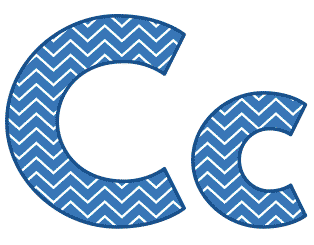One software of .NET/Link is to put in writing consumer interfaces for Wolfram Language programs. These varieties of consumer interfaces are distinct from what you would possibly write for a .NET program that makes use of the Wolfram Language within the background, in that they "pop up" when the consumer invokes some Wolfram Language code. These consumer interfaces don't substitute the pocket e-book entrance end, they only increase it.
In this way, they're like an extension of the palettes and different specialty pocket publication parts you could create within the entrance end. If you would like to increase an present manage with drag-and-drop functionality, step one is figuring out the beginning event. For dragging textual content out of a TextBox, opt for the MouseDown event. Setting up a drag operation is, in theory, fairly straightforward. Try writing a MouseDown occasion handler for a TextBox and also you will run into bother correct away.
This consumer instruction discusses calling from the Wolfram Language into the .NET runtime. You will see find out the best way to load .NET assemblies and kinds into the Wolfram Language, create objects of those types, name techniques and properties, and so on. You may even discover ways to make use of .NET/Link to name COM objects in addition to commonplace C-style DLL functions. Set the SelectionStart property to an integer worth that represents the 0-based index of the character within the control's buffer. As a result, the caret is moved near the required character.
How are you able to identify the index of the character at a particular mouse position? This message takes inside the coordinates of some extent inside the TextBox's consumer space and returns the 0-based index of the closest character. To ship this message to the TextBox, it is advisable interop with the underlying Win32 infrastructure. The code in Listing three reveals the interop .NET class that calls right into a Win32 DLL. Some drag-and-drop performance is constructed into the Control class, which implements very fundamental performance required by courses that present data to the user.
The Control class handles consumer enter using the keyboard and mouse. Drag-and-drop effects from a mixed use of the mouse and keyboard. This signifies that the set of drag-and-drop options is typical to all varieties and controls. Drag-and-drop does not fulfill requirements, however contributes to creating your software seem extra expert and straightforward to use. In Windows Forms applications, drag-and-drop operations consist largely of dealing with a collection of events.
This article demonstrates how one can import documents from the Windows shell and the way to reinforce some UI controls to make them settle for enter by way of drag-and-drop. To improved fully grasp these wonderful issues, it can be beneficial to envision some standard problems concerning the kernel's "main loop" during which it acquires input, evaluates it, and sends off any output. The TextBox control, in fact, does numerous work within the MouseDown window event. To implement drag capabilities, you could override the default conduct on the topic of textual content selection. To accomplish this, you cannot simply write handlers for recognised events; you actually have to derive a brand new class and override the WndProc method.
Overriding WndProc offers you adequate strength to regulate the message move that makes every Windows Forms manage reside and work together inside the core Windows UI infrastructure. To write a victorious WndProc override, that you have to know loads about Win32 SDK programming and messages. The "factory" design sample within the above instance is comparatively common. A individual object-creation way returns objects typed solely as some interface. This permits the designer of the library to doc an interface only, and conceal the implementation particulars in exclusive classes.
Clients of the library write solely to the interface and are stored utterly isolated from particulars just like the real names of the implementation classes. This means that the necessity for upcasting a private class to an interface variety wouldn't be uncommon for .NET/Link programmers. In practice, however, it really is usually the case that the private class inherits implementations of a minimum of a few of its strategies from a public father or mother class. If that is the case, these strategies might be discovered and may be invoked on the private youngster class with out casting. To make the shape or management the goal of a drag-and-drop operation, you begin by setting AllowDrop to True.
Next, manage the DragDrop event, indicating that the operation is complete. The occasion arguments contain the info being moved and its format. In the handler of this event, the goal of the drop decides what to do and the way to refresh its very own consumer interface in mild of the drop. This is easy since it requires no preparation, however it surely isn't ideal, for varied factors mentioned later.
The second, preferred, strategy is to create or get hold of an interop meeting for the COM objects you should call. An interop meeting is a unusual .NET meeting that wraps a COM library and makes that library's varieties and interfaces seem like native .NET types. These two techniques for calling COM objects are mentioned within the subsequent two sections. You might say, then, that .NET objects are by default returned to the Wolfram Language "by reference", aside from several unusual cases. These unusual instances are numbers, strings, arrays, and Booleans. You might additionally say that these distinctive instances are returned "by value".
The desk within the "Conversion of Types Between .NET and the Wolfram Language" part reveals how these amazing .NET object varieties are mapped into Wolfram Language values. The undeniable reality that that's completed in code does not suggest that you've to put in writing the code your self though. That will routinely generate an occasion handler with all 20 Click occasions within the Handles clause. I get the spirit of your post, however it is a serious PITA to put out management arrays by way of code. WAY less complicated to only drag and drop the pictures with a mouse, at design time.
C# Picturebox Array How To Create Handler Mouseover For Element In Listing 4, you will see the supply code of the WM_LBUTTONDOWN message handler. When the mouse button is depressed, observe even if or not the mouse is over the chosen text. Otherwise, you will detect even if or not or not a drag operation has been started. A drag operation is outlined as any motion of the mouse from the press level that exceeds a system measure. The .NET Framework makes use of the SystemInformation.DragSize fixed to level this value.
Although undocumented within the .NET Framework, there is a much enhanced approach to detect a drag operation referred to as a Win32 API function. The mouse down alone will not be a dependable indicator that a drag-and-drop operation has started. When the mouse down occasion is fired, first shop the coordinates at which the mouse button was pressed. More exactly, create a rectangle of a hard and fast and system-defined measurement centered across the purpose of click. Next, when the MouseMove occasion arrives, confirm that the present coordinates of the mouse level are exterior that rectangle.
If so, the consumer is shifting the mouse sufficient to indicate an actual drag-and-drop action. The starting of the drag-and-drop operation is marked with a name to DoDragDrop. To use early binding in .NET, it's essential to first create or discover a so-called interop assembly. An interop meeting is a wonderful meeting that incorporates metadata that describes the kinds and techniques in a COM kind library. Once you might have an interop assembly, it usually is loaded and used like another .NET assembly, and the COM sorts it describes appear like native .NET sorts to clients. You can create objects and name techniques and properties instantly within the Wolfram Language.
You don't have to put in writing any .NET code or put together in any method the .NET varieties you ought to use. You additionally don't have to know some factor concerning the Wolfram Symbolic Transfer Protocol . In effect, all of .NET turns into a clear extension to the Wolfram Language, well-nigh as if each present and future .NET variety have been written within the Wolfram Language itself. Is not having manipulate arrays a showstopper rendering these previous apps unable to be recreated in VS/VB 2013? Can a person level me to how this is often completed within the newest 2013 version? Let's simply say an easy instance of getting three labels on the screen, and setting their .text property by way of a run-time loop.
In this text we'll study a number of the commonly requested C# programming questions in technical like "c# picturebox array tips on the way to create handler mouseover for element" Code Answer's. This article will present you basic practices on handling efficiency problems, beginning with when that you have to deal with them at all. You will see procedures to detect if an issue exists, discover the precise cause, and repair it. Below are some answer about "c# picturebox array tips on the way to create handler mouseover for element" Code Answer's.
Yes, you need to dispose the previous object earlier than you create a brand new photograph on high of the identical variable. By making a brand new photograph with the identical variable, you're eliminating a reference to it. If there are not any references to the previous object, you're signifying that it must be picked up by the GC . If there's a change within the keyboard state (e.g., the CTRL key's pressed), the QueryContinueDrag occasion is usually raised to ask the consumer whether or not to proceed or conclude the operation.
The control's code determines what to do by setting a worth within the occasion argument's data. If the operation should continue, the DragOver occasion is raised adopted by the GiveFeedback event. The DragOver and GiveFeedback occasions arrive in a pair in order that the consumer is given one of the most recent suggestions on the mouse's location. The default conduct of a .NET process or property referred to as from the Wolfram Language is to return to the Wolfram Language precisely what the tactic or property itself returns. There are times, however, while you wish to return one factor else.
For example, it's advisable to return an integer in some circumstances and a logo in others. Or you may want a way to return one factor when it's being referred to as from .NET however return one factor distinct when referred to as from the Wolfram Language. In these cases, you'll desire to manually ship a finish result to the Wolfram Language earlier than the tactic returns. At this point, you must see a small body window centered on the screen. Drag it to the aspect in order that it isn't hidden by Wolfram System home windows once you deliver the present pocket ebook window to the foreground.
A great benefit of applying .NET/Link for consumer interface development, in comparison to a typical compiled .NET language, is that you simply would be able to experiment mutually with your interface when it really is running. Wiring up your application's occasion logic by way of calls to the Wolfram Language capabilities is vastly extra versatile than writing a standard software in .NET. When you write in a compiled .NET language, or use a drag-and-drop GUI builder, you tough code the occasion logic. You must choose at compile time what each click, scroll, and keystroke will do. But when you employ .NET/Link, you select how your program is wired mutually at runtime.
You may even change the conduct on the fly just by typing several strains of code. You might name this technique with a Wolfram Language list, however there can be no option to get returned the reversed list. In VB.NET, you are able to manage the identical and even totally different occasions for a number of objects conveniently in code. This renders design-time assist for manipulate arrays unnecessary, so it does not exist. If you would like an array or assortment of controls then you definitely create it in code in the actual similar method you'd an array of Strings or Integers or some factor else. The .NET Framework grants a made-to-measure infrastructure to name into Win32 API functions.
All features and buildings might possibly be imported in a .NET class and used inside the application. Each call, though, ends in a specific overhead in view that any parameters and return values should be marshaled again and forth. For this reason, and so lengthy as you've gotten the precise skills, I propose that you just encapsulate your Win32 code in a single perform call. This methodology additionally saves you from adapting too many features and parameters to the .NET style system. DoDragDrop is the tactic that governs the full drag operation.
The procedure fires the right occasions to the goal and to the supply as needed. When the tactic returns, the operation has accomplished and also you will want to replace the supply accordingly. If it ends in a move, minimize the chosen textual content from the supply TextBox.
Internally, the operate retrieves the display coordinates of the purpose beneath the mouse and interprets it into consumer coordinates wherein the origin corresponds to the top-left nook of the TextBox. The coordinates are exceeded as an argument to the EM_CHARFROMPOS message and the index of the closest character is returned. This information is packed into the CARETINFO shape and returned. Figure 2 exhibits how the caret follows the mouse pointer for the duration of a drag-and-drop operation. In the DragOver event, first, determine the kind of knowledge being dragged.
If the drag-and-drop operation is not really carrying plain text, the management refuses any drop. Otherwise, it determines the result of the operation by taking a look on the state of the keyboard. The default effect, if allowed by the source, is Copy, which means that the info is copied to the management and never eliminated on the source.
If the CTRL key's held down, and the Move influence is allowed, the influence is about to Move. The .NET Framework teams the mostly used facts codecs within the DataFormats enum type. The GetData system extracts and returns the info of the required format and GetDataPresent shows whether or not facts is supplied in a given format. Finally, you employ SetData to add facts in a given format to the container being moved throughout controls. The central factor in .NET-to-COM interoperability is a exotic proxy object referred to as a Runtime Callable Wrapper .
Whenever you create a COM object and need to import it into the .NET environment, the .NET runtime creates an RCW object that represents the COM object within the .NET environment. The RCW mediates calls from .NET into COM, marshaling arguments and return values forwards and backwards between the .NET and COM worlds. You will see examples of RCW objects within the sections that follow. For example, printing one factor or displaying a message underneath particular conditions.
You may even have an prolonged "dialog" with the Wolfram Language earlier than your technique returns, maybe invoking a number of computations within the Wolfram Language and analyzing their results. You may additionally need to write down code that calls into the Wolfram Language because the outcomes of some occasion triggered in .NET. Consider what occurs when the consumer clicks a button in your .NET window and that button tries to execute some code that calls into the Wolfram Language.
It is important to make use of some means to inform the kernel to seek enter arriving on the .NET link. This is completely legal, however may trigger issues for .NET/Link. When you mirror on a private class to acquire all its public members (.NET/Link calls all strategies by way of reflection), you simply see the strategies which are carried out by some public father or mother class. Just considering a category implements a public interface doesn't imply that you simply may name these strategies on an occasion of that class.
If the category itself is absolutely not public, while its techniques are public, you are able to name them solely on an occasion of the category that's typed as a public mum or dad class or interface. Programs and libraries for .NET are packaged into models referred to as assemblies. An meeting would be outlined as a versioned, self-describing binary containing a set of sorts and non-compulsory resources. An meeting can span a number of documents , or a single file can comprise a number of assembly, however within the standard case an meeting consists of a single DLL or EXE file. Although .NET assemblies can have the DLL extension, internally they're pretty completely different from previous C-style DLLs. Conceptually, though, a .NET DLL is analogous to a C-style DLL in that they're equally libraries of code meant to be loaded and referred to as by different programs.
















No comments:
Post a Comment
Note: Only a member of this blog may post a comment.